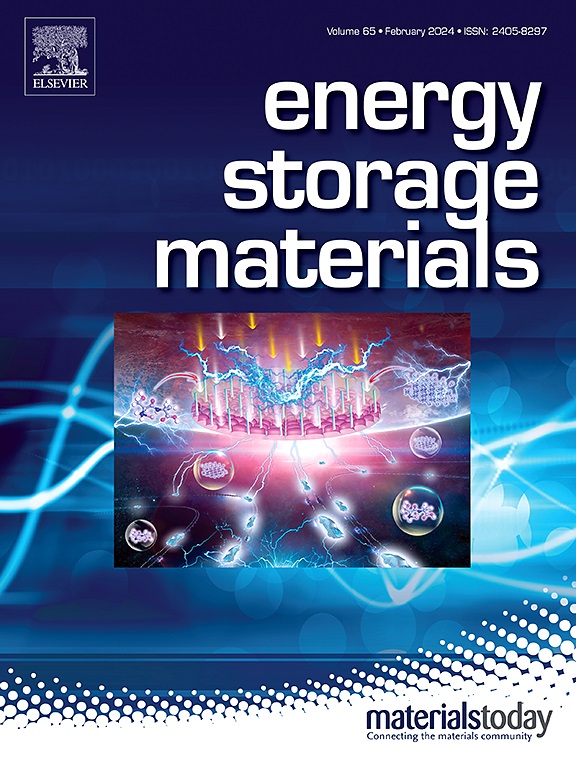Biomass-derived hard carbon anodes: From structural engineering to industrial sodium-ion battery applications
IF 18.9
1区 材料科学
Q1 CHEMISTRY, PHYSICAL
引用次数: 0
Abstract
Biomass-derived hard carbon has emerged as a promising anode material for sodium-ion batteries (SIBs) owing to its tunable microstructure, sustainability, and cost-effectiveness. Although extensive research and industrial practices have validated its sodium storage feasibility, the inherent structural complexity poses significant challenges for practical implementation. This review systematically correlates the structural characteristics of hard carbon, including microcrystalline regions, defects, and nanopores, with their sodium storage mechanisms, analyzing the electrochemical behaviors arising from distinct structural configurations. The enhanced low-voltage plateau capacity and cycling stability critically depend on the pivotal role of short-range ordered carbon layers and closed-pore architectures. In light of this, a rigorous framework is established for selecting high-carbon-yield biomass precursors, with particular focus on precursor composition-structure relationships and their effects on electrochemical performance. Advanced engineering strategies are comprehensively evaluated, including pyrolysis parameter optimization, closed-pore construction, heteroatom doping and surface functionalization. Furthermore, synergistic optimization approaches such as electrolyte formulation, conductive network design, and aqueous binder systems are highlighted for generating thin and stable solid electrolyte interphase (SEI) layers. This work provides a roadmap for transforming biomass waste into high-performance anodes, bridging fundamental insights on sodium storage mechanisms with scalable manufacturing strategies for next-generation SIBs.
生物质衍生硬碳阳极:从结构工程到工业钠离子电池应用
生物质硬碳由于其可调的微观结构、可持续性和成本效益,已成为钠离子电池(sib)极具前景的负极材料。尽管广泛的研究和工业实践已经验证了其钠储存的可行性,但其固有的结构复杂性为实际实施带来了重大挑战。本文系统地将硬碳的微晶区、缺陷和纳米孔等结构特征与其储钠机制联系起来,分析了不同结构构型引起的电化学行为。增强的低压平台容量和循环稳定性关键取决于近程有序碳层和闭孔结构的关键作用。鉴于此,本文建立了一个严格的框架来选择高碳产量的生物质前驱体,特别关注前驱体的组成-结构关系及其对电化学性能的影响。对先进的工程策略进行了综合评价,包括热解参数优化、闭孔构建、杂原子掺杂和表面功能化。此外,协同优化方法,如电解质配方、导电网络设计和水性粘合剂系统,被强调用于生成薄而稳定的固体电解质界面(SEI)层。这项工作为将生物质废物转化为高性能阳极提供了路线图,将钠储存机制的基本见解与下一代sib的可扩展制造策略联系起来。
本文章由计算机程序翻译,如有差异,请以英文原文为准。
求助全文
约1分钟内获得全文
求助全文
来源期刊

Energy Storage Materials
Materials Science-General Materials Science
CiteScore
33.00
自引率
5.90%
发文量
652
审稿时长
27 days
期刊介绍:
Energy Storage Materials is a global interdisciplinary journal dedicated to sharing scientific and technological advancements in materials and devices for advanced energy storage and related energy conversion, such as in metal-O2 batteries. The journal features comprehensive research articles, including full papers and short communications, as well as authoritative feature articles and reviews by leading experts in the field.
Energy Storage Materials covers a wide range of topics, including the synthesis, fabrication, structure, properties, performance, and technological applications of energy storage materials. Additionally, the journal explores strategies, policies, and developments in the field of energy storage materials and devices for sustainable energy.
Published papers are selected based on their scientific and technological significance, their ability to provide valuable new knowledge, and their relevance to the international research community.
 求助内容:
求助内容: 应助结果提醒方式:
应助结果提醒方式:


